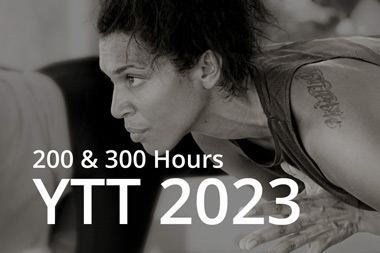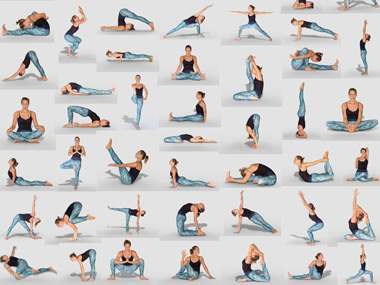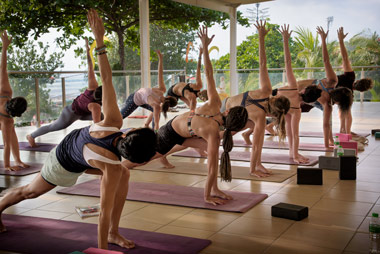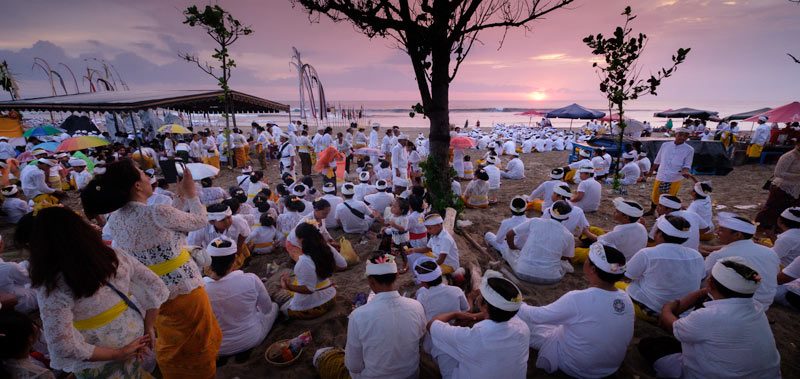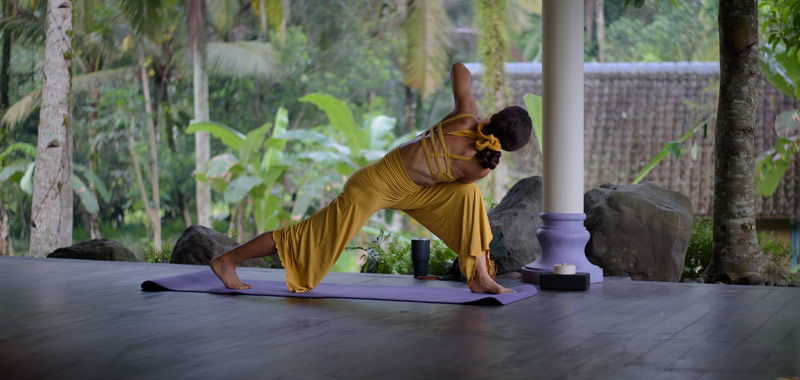Choosing the best Yoga teacher training for you, 6 tips to make the right choice!
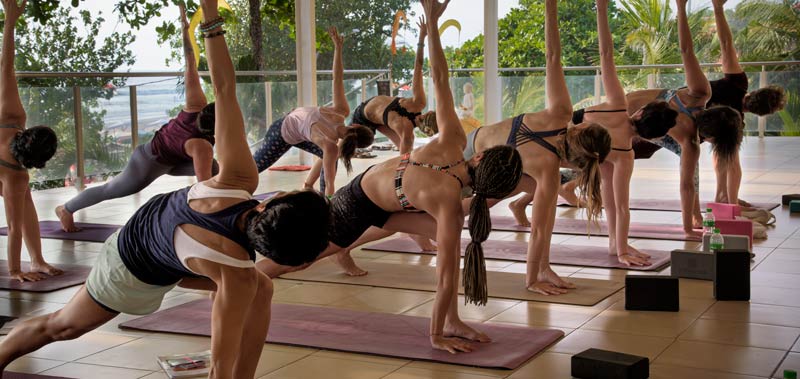
Table of Contents
How to Choose a Yoga Teacher Training Among All the Course Offerings?
Choosing the best Yoga Teacher Training for you is a tricky task, especially without any guidance. We received many emails from students who were clearly struggling in their training research that we decided to create this guide.
The number of certification courses is huge and will not stop growing. To make it more difficult, they offer different styles and variation. It is not a necessary bad thing, because it implies how more people aware about yoga benefits and free to pick one of the best from many options. However, all of these options can make it difficult for you to choose, mislead, or even discourage you.
In this article, we will guide you to go through that difficult step by covering six essential points. We hope to bring you a broader view of the YTT offerings. In this way, you can choose more easily while avoiding surprises.
But first, what are the goals you want to achieve by taking a teacher training course?
- Knowing what is/are your goals can help you to start your research. Here are some goals a YTT allows you to achieve.
- To begin a Yoga teacher career while covering a specific style and all the necessary foundations.
- To enhance your teaching skills with in-depth theory and practice or specific addon(s).
- To go deeper in your own practice by adding theoretical and wider Yoga knowledge.
What is the best Yoga teacher training for you?
Soon after starting your research, you will notice that almost no YTT courses are similar…. Some of them require a particular level, offer different duration, styles, and focus on certain topics compared to the other YTT.
Let’s have a deeper look at each of these aspects you need to consider before booking any courses.
1. Choosing the Yoga Style
Choosing the right style is an important question to take into account for your Yoga teacher training certification. Also, for your future evolution, especially if this is your first teacher training.
Hatha Yoga, Vinyasa, Ashtanga, Yin, or Nidra : which one to choose?
On one hand, we will say: the one you are the most comfortable with and you like the most. It is vital, because you will spend a lot of time on it. You will continue learning, practicing and teaching, even paying attention to your students to help them as best as you can.
On the other hand, instead of choosing a fancy or too specific style, It is usually much more rewarding for students to learn Hatha Yoga or Hatha Yoga combined with Vinyasa first in teacher training. Regardless of your taste or style preference.
It seems hard, we know. But, here are the main reasons why Hatha and Vinyasa will cater a strong ground to your yoga journey.
- It is important to remember that Hatha Yoga is the mother of all other styles. It means, if you have it as your foundation, you will be able to understand and adapt to other styles much easier.
- Hatha yoga is wide in terms of comprehension. It covers all the major Asanas and originally focused on health. It works gently, but deep on flexibility and stability, which is also a huge benefit.
- Hatha and Vinyasa styles are also very open to creativity. It is unlike Ashtanga and Yoga Bikram that have fixed postures and predefined sequences. With Hatha and Vinyasa, you can always create a new sequence for each of your classes or include Asana variation. Thus, you can have fun practicing different sequences and never get bored.
- Hatha based YTT should brings a deeper approach to the other fundamental aspect of Yoga. They are achieved through Meditation, Pranayama, and Shatkarma. They are the necessary add ons to seriously start your career with.
- The Vinyasa part will give you an amazing enhancement of your personal and teaching practice. It helps you to optimize your practice with fluid Asana transition and a synchronized breathing technique. Another world is just a few steps away!
I am not saying that is the only way but I think you get my point! After this first step allows you to build a solid foundation, you will feel a great freedom to grow in every way you want along your yoga path. Why would you want to rush the steps so that you may find yourself feel slowed down or limited later on?
We love yoga and none of us are a single style person. All styles have different tastes and benefits. Depending on our mood and need, we like to practice different styles and we thank Hatha Yoga for easing us into any style.
2. YTT Location, Home or Abroad?
Many students look outside of their own country to find a teacher training. There are several advantages of taking YTT abroad.
- Get more focus on your YTT by getting away from habits and distractions.
- Some countries are more budget friendly for your teacher training than the other countries.
- Get closer to the source of Yoga and Hinduism culture.
- It will give you a great opportunity to travel.
It allows you to step back from your daily life.
Two countries worth visiting for a teacher training :
India is the place of origin of Yoga and Hindu culture. It is possible to meet incredible teachers there. You will also see that Yoga certification in India can be a lot more focused on practice. You might not have access to a 5-star hotel. The traveling part can be a deal-breaker for young yogis and inexperienced travelers as well. Yet, a YTT in India can be a big step in your Yoga journey.
200-hours YTT pricing with accommodation: from less than 1000 USD to 3000 USD
Indonesia, particularly Bali Island is a small Hindu paradise with a very dynamic Yoga scene which also has a lot to offer in your Yoga journey. Traveling in Bali is now super easy and will give you a rich panel of YTT with different landscapes and accommodation standards. It’s not as budget friendly as India, but it is still a lot cheaper than in western countries.
200-hours YTT pricing with accommodation: 1500 USD to 6000 USD
About YTT & travel : You won’t have much time for any tourist activity during your YTT. Your YTT days off enables you to have a tourist trip a little further if the fatigue of the previous days does not take over. So, if you want to explore the country, plan at least a few days before or after your certification. Otherwise, it will be such a waste not to travel around while you are in a paradise!
3. YTT Duration, Short or Long Term?
a. Short-term YTTs
They are generally offered for duration ranging from 15 days to 29 days.
Let’s be honest, a short term teacher training is always a challenge!
The schedule is very busy. From waking up in the morning, all day long classes, to the practice that takes several hours a day to the point that you will feel exhausted. Even there might be this brief moment when it feels like you begin to doubt yourself. However, as intimidating as it sounds, a short term YTT can also result in great outcome if it is designed well.
In our experience, a short term program that is well designed and run by an experienced yet cautious team has 98% achieved goals in a very positive way. Many students discovered strengths, courage, and determination they did not realize that they had before!
How does it happen?
The stress caused by a well dosed intensive training is combined with a secured environment, the group emulation, and a competent team. These can create a perfect condition to push students to go outside of their comfort zone. Under these conditions, many students discovered their unknown potential, a big part of why a classroom training will remain a completely unique experience.
Warning!
A very short YTT duration may sound attractive and have a low cost. However, a 200 or 300 hours of teacher training itself is already condensed knowledge. Compressing its length of duration will give you more frustration, harm, and waste rather than benefits.
Be aware that 200 hours or 300 hours of YTT condensed in a too short time may add difficulty and discomfort to your training.
Here is an already seen example of a 200-hour teacher training in 15 days :
This means 200/15 = 13.3 hours of study per day, or more if there are days off!
In this case, you will accumulate a lot of fatigue, you may not be in the best state to integrate the whole program. Moreover, the risk of injury will increase as well, especially if you are not well prepared for any physical practice.
Note: We will not discuss the 200 hour versus the 300 hour Yoga teacher training because the 300 hour training should be reserved for students who have already completed the 200 hour program and may have already begun to build a personal experience.
b. Long-term YTTs
They are not easy to find, but some schools around the world provide teacher certification with the length of a few months. It can be a good option if you cannot leave your country for a few weeks or train all day long because you also need to take care of your children or work.
A long term training will spare you some time to digest that huge amount of knowledge and to enhance your practice progressively. It will make the difference, especially if you are not very well prepared to endure several hours of daily practice.
4. Yoga Schools Selection
Whichever school catches your eyes, contact them!
Reach them through email, phone call, or any available methods that you prefer. Make sure that you get in touch with a lead teacher and not a secretary. Lastly, ensure that during your training, you get the experienced teachers they advertised. Have you had good interactions, good feelings?
Still not sure after exploring their website, reviews, and contacting them?
Try to connect to one of their last students through social media and politely ask if they do not mind that you contact them to know about their experience with this school!
5. Balanced or Specific Curriculum?
All schools registered by Yoga Alliance share many similarities in their curriculum but, these schools still have the flexibility to design programs with different ways of teaching.
- Some curriculum focus more on practice than theory.
- Other are more dedicated personal development than teaching methodology.
- Some schools like to emphasize a lot on anatomy or are specialized in medical yoga.
- Other prefer to highlight a classic teaching rather than modern teaching.
Whereas, other schools try to offer a balanced curriculum.
So, it really depends on your goal and needs! Are you looking for a YTT course to become a yoga teacher right away? Is it the first step of your new career plan? Or maybe just for your own learning and benefit?
6. School & Program Accreditation
When it comes to accreditation, things can get confusing.
There are many organizations that claim to be legitimate in issuing registration or accreditation for yoga school. Many of them attached “Yoga Alliance” in their name. For example, Yoga Alliance International; Yoga Alliance International Australia; The Canadian Yoga Alliance; or even Naked Yoga Alliance…
Well, the list can keep going. To read more about “Not All Yoga Alliances Are the Same”, click here.
The most well known is Yoga Alliance based in the US. It has been established since 1999 and can be found at yogaalliance.org. They provide curriculum standards, guidelines, training program validation, allow you to integrate the list of registered schools and teachers, and many more features.
You have probably seen their most common level badge. First, “RYS” which stands for Registered Yoga School. Second, “RYT” which stands for Registered Yoga Teacher. Both are available in 200, 300, and 500 hours of YTT.
Be aware that accreditation is not enough to guarantee you a perfect YTT. In the opposite, some reputable schools don’t even need to use any kind of third party organisation for their recognition!
Country Legislation & Accreditation :
As per this article is created, the majority of countries do not yet have specific Yoga regulations. But, things can be different in your country as it is in some states in America. If you want to teach or start your own school after a YTT, we will suggest you to understand first about your country’s regulation related to yoga. You can ask any local studio or the appropriate government administrations.
Conclusion
- There are many kinds of different YTTs as there are schools available.
- A YTT can be as interesting for a practitioner as it is to become a Yoga teacher.
- The Yoga style for your YTT should be seriously considered despite what you think.
- The duration, program, and school must be carefully chosen and the lead teacher contacted.
The right YTT can give you an incredible experience. It offers you a countless of benefits and discoveries, as long as it is chosen and prepared consciously. 200 and 300 hours of short-term training most likely brings out a lot of emotion because of the very intense practice. It is surprising for most students and it gives them another vision of themselves and also their yoga potential.
We hope that this article helps you in your research! Also, remember that, even if you find the perfect school with the perfect program for you, a 200 hour Yoga teacher training can launch your career but, this is only the first step! So, it is really important to keep an open mind, stay humble, keep learning, and practicing.
